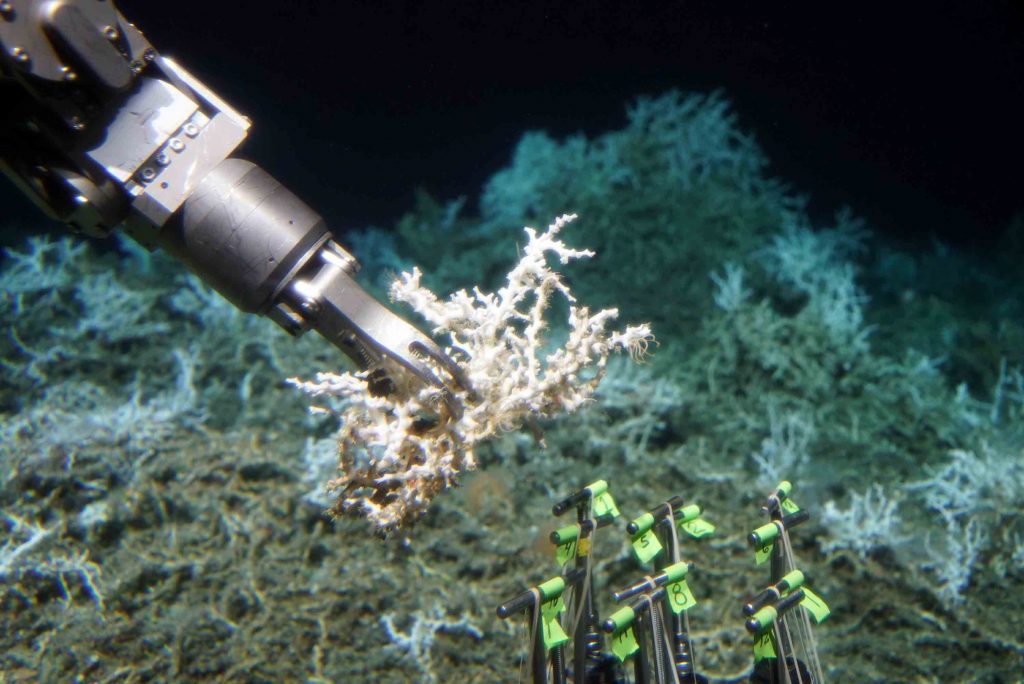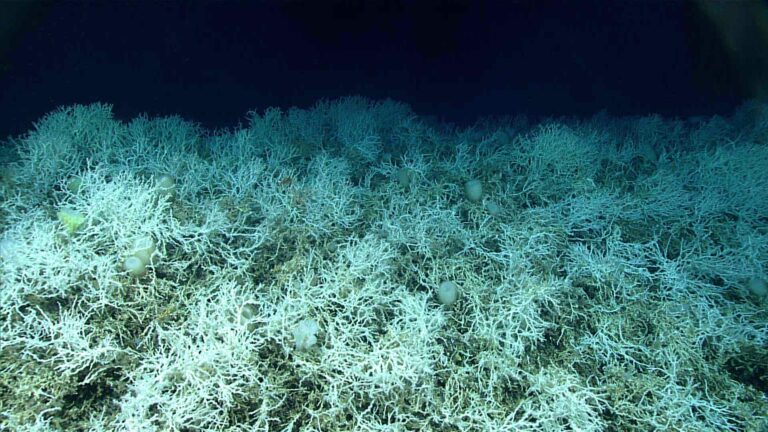A deep-lying coral reef off the south-eastern USA over an area of 10,000sq miles – almost the size of Albania – has been declared the world’s largest such habitat yet discovered.
The reef lies on the Atlantic Ocean’s Blake Plateau, a broad, flat topographical feature with a steep drop-off about 100 miles off the Florida coast.
t has been known about for some years but not its full extent. it is only now that it has been fully mapped and described in a study published this month.
The existence of the reef was reported in mid-2018 on Divernet, following a expedition on which a part of it was described off South Carolina. At that time it was projected to extend for at least 85 miles.
“For years we thought that much of the Blake Plateau was sparsely inhabited, soft sediment, but after more than 10 years of systematic mapping and exploration, we have revealed one of the largest deep-sea coral-reef habitats found to date anywhere in the world,” announced Kasey Cantwell, operations chief for NOAA Ocean Exploration, which co-ordinated the multi-agency study. NOAA is the USA’s National Oceanic & Atmospheric Administration.

“Past studies have highlighted some coral in the region, particularly closer to the coast and in shallower waters, but until we had a complete map of the region, we didn’t know how extensive this habitat was, nor how many of these coral mounds were connected,” said Cantwell.
The study involved multiple expeditions, including several on the NOAA research vessel Okeanos Explorer and through the long-term Deep Search project.
Million Mounds
The scientists assembled bathymetric data from 31 multi-beam sonar mapping surveys to produce the “almost-complete” seabed map of Blake Plateau, using a standardised automated system to classify, delineate and quantify seabed features. Imagery from 23 submersible dives was analysed along with the mapping data.
The research identified 83,908 individual coral-mound peak features. The almost continuous coral-mound area measured some 310 x 68 miles, with a high-density core area of 158 x 26 miles. Large variations in the density, height and pattern of distinct coral formations was revealed.
The largest area, known as Million Mounds, was primarily made up of Desmophyllum pertusum (previously called Lophelia pertusa), a stony coral usually found between 200 and 1,000m deep in average water temperatures of 4°C.
Its white colouring can make it appear unhealthy but, beyond the reach of the sun, deep-sea corals do not rely on symbiotic algae so do not bleach.

Deep coldwater corals live by filter-feeding biological particles, and provide shelter, food and nursery habitats to other invertebrates and fish.
Populations of corals and other deep-sea species are now believed to be related across geographically distinct areas through a process known as ‘connectivity’ – which, according to NOAA, is “important for predicting the impacts of human activities on coral communities and for developing solid plans for their protection”.
“This strategic multi-year and multi-agency effort to systematically map and characterise the stunning coral ecosystem right on the doorstep of the US East Coast is a perfect example of what we can accomplish when we pool resources and focus on exploring the approximately 50% of US marine waters that are still unmapped,” said lead author of the study Derek Sowers, who is mapping operations manager for the Nautilus Live Ocean Exploration Trust.
“Approximately 75% of the global ocean is still unmapped in any kind of detail, but many organisations are working to change that,” said Sowers. The study is now published in the scientific journal Geomatics.
Also on Divernet: Vast deep-sea coral reef surprises scientists, 90m down: Coral bleaching is cutting deep, CCR divers surface with deep-reef discovery, Video-sledging reveals deep coral gardens

